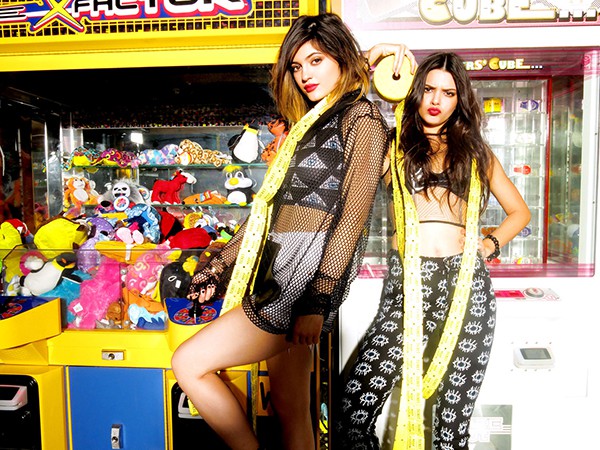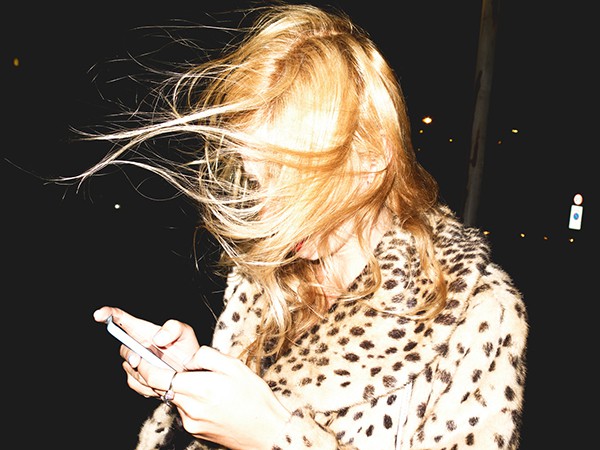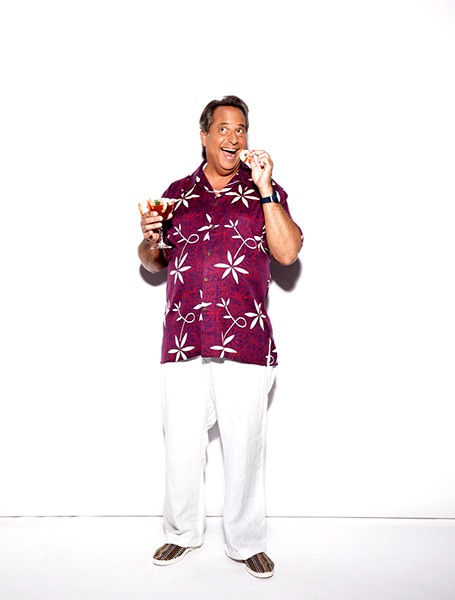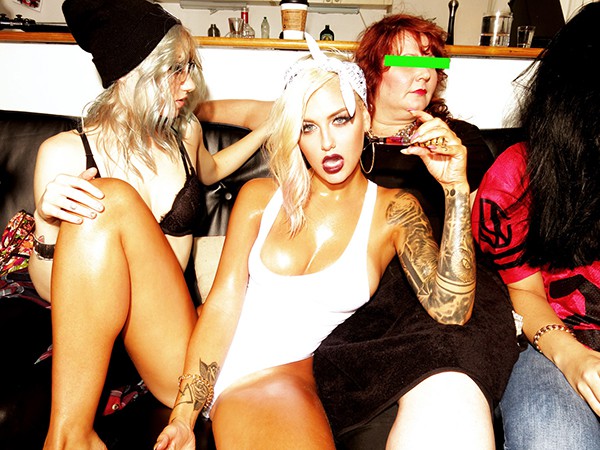Share
Integrating Your Personal Style into Commercial Work: Tips from Kareem Black
This interview is just one of many from our free, downloadable Guide: Breaking Into Commercial Photography. For more tips, download your copy toda...

This interview is just one of many from our free, downloadable Guide: Breaking Into Commercial Photography. For more tips, download your copy today, here.
Kareem Black graduated from the School for Visual Arts in 2000 when the economy was flush, and he quickly found work for clients like The Fader, GQ, Elle Girl, Sony Music Entertainment and Atlantic Records. Featured in 2005 as one of Photo District News’ 30 Emerging Photographers, Black is now known for both his top-notch studio abilities as well has his talent for capturing the frenetic energy of New York’s party scene. This New York-based photographer had a lot to share with us about marrying personal work with commercial clients.
How did you get started with commercial clients?
When I graduated in 2000, the economy was really great. I started to shoot for a lot of people that, if the economy was otherwise, I wouldn’t have been able to. I was getting hired for a lot of jobs that I wasn’t really qualified for. I was shooting for a lot of music magazines and websites. From those connections, I started to shoot for The Fader, which was more artsy.
I was going out a lot and meeting people. A lot of my business has come from just meeting people out. My first ad campaign came from a connection I made out at a function. I showed him my book. We shot a small smoking-awareness campaign. After that we shot a Cingular campaign that was my first big campaign. Then I started shooting for Verizon based on a friend of the person who I was shooting Cingular for. That was all from word of mouth.
Now that photography is more competitive, how do you stand out? 
There are so many good photographers that it almost doesn’t matter how good you are. If you’re good there are hundreds of photographers who are that technically good. So it’s about finding your own vision. When I started, I didn’t know what I wanted to say with my photography. But I was good at light, I was good with people, and that was really important.
How have you turned your personal work into something commercial clients will hire you for? 
When I’m out and about, I find myself in weird situations. I started taking pictures of these situations, running around and catching moments. It’s not so much about lights and composition, it’s more about feeling and energy.
My previous agent was scared of it because they thought that a lot of it was unprofessional. My current agency is a lot more forward-looking and realized that this is where the industry was going. They said we should probably do something with this body of work. I thought they were crazy. Why would people want to see pictures of a lot of good looking people having a good time in groups? It turns out people like that.
So I started to make a body of work, and I called it Feels Good Let’s Go. Lights can be blown out or imperfect, compositions don’t have to be perfect. Expressions don’t have to be perfect, and people’s heads can be cut off. I think that as long as the story is clear for the viewer, then that’s sort of mitigates the aesthetic perfection.
A lot of what I get hired for now is in the vein of Feel Good Let’s Go. With that said, I was just in LA shooting the cover of Cosmo, and it was me with a bunch of lights. The photos turned out really beautiful. I think it’s important to be able to do both. I enjoy both.
How do you market these two different styles?
I used to have two websites, my photography site and a Feel Good Let’s Go site. My name wasn’t even on it. The contact info was my agent’s email. Now it’s integrated into my site. It’s the first thing you come to. I’m really proud of that. If someone’s hiring me to do that, that’s awesome because I was doing that for free already.
How do you translate this personal work for a commercial client?
No one’s going to pay me an advertising rate and send me out with a camera to do whatever. Coming from a more structured background, I understand that we’re here to do a job. I think I’m pretty good at finding that line of “let’s get crazy” but “what do you guys need?” I make sure to know what we are selling and what are the important bullet points to hit.
My clients know I can actually shoot a campaign and be able to sell a product, while at the same time conveying that spontaneous energy. It looks like there’s not a lot of thought, it looks like all kinetic energy, but there really is a lot of thought. We are partying, but the party must stop if the label’s not facing the camera.
What advice do you have for a photographer who wants to leverage a personal project into commercial work?
I think people should shoot what they like to shoot, and they should show it to as many people as possible. You’d be surprised—there are applications out there for everything. If it is really personal work, then that means it’s not everyone’s thing. This is your thing. In a lot of ways, we all have to wait until your thing or moment is up. Feel Good Let’s Go happened at the right time. This is what’s happening right now in photography. It’s sellable now, but it might not be five years from now.
My other suggestion would be to learn the commercial, technical stuff. I’m happy I know how to use lights and light ratios and retouching because maybe there’s a day when my personal work isn’t going to be selling and I’ll have this other thing to do also. Being a technical photographer and understanding how photography works is really, really important.
What are some of your biggest challenges of being a commercial photographer?
In a perfect world, a photographer would come on set and take pictures, but there are a lot of things that happen before that point can be reached. There’s a lot of stuff that we do that doesn’t have anything to do with making pictures. I’m on a lot of conference calls, and I write a lot of treatments explaining what I want to do and how I’m going to do it on a shoot. In most ways, I’m OK with being that sort of a politician, but it can be frustrating. But at the end of the day, it’s our job. It’s better than being in a cubicle.
How do you keep your cool and deliver under pressure when working with big clients?
The photographer is the captain of the ship. If something goes wrong, it’s always our fault. It doesn’t matter if the make-up artist is late or whatever. The stress level is higher, and it gets more intense the bigger the job. That’s why we get paid more money than everybody else—because we have more responsibility. It can be fun but also so draining. You are on the entire day. You’re not just taking pictures, you’re wearing all of these hats, and making sure that everyone is where they’re supposed to be psychologically.
You want the vibe to be cool and drama-free on set. Delegating responsibility to the right people and making them feel appreciated is important. If you want to have a power trip on set, that’s going to kill the vibe of everything. If there’s a conversation I need to have with the client—like if there’s a difference of opinion or a question about how to solve a certain problem—then we’re going to have that conversation, but we’re not going to have it in front of everyone.
My mom’s a doctor—she saves people’s lives. Making pictures is easy compared to that. That’s the vibe that I go with. Let’s just take some pictures. Let’s go. It’s not a life or death situation.
How do you use social media?
Social media is vitally important. On many levels, Facebook is still essential. I feel like that’s a staple. I think Instagram is super-important, especially right now for photographers. The rest of them, I’m not very into.
At the core of everything should be the photographer’s website.The website should purely be work. Leading out from the hub, there are sites like Instagram and Twitter where you are doing behind the scenes or telling a little bit more of the story about yourself.
I’m very careful about posting things that are controversial. I want you to know who I am. I’m telling the story that I want to tell and editing it the way that I want to edit it. If there’s something that I really want to show my friends, I’m going to just text it. Social media is something photographers need to do every day, but we need to maximize how efficiently we use these things. It’s easy to get caught up and be on it all day.
How do you recommend dealing with the inevitable rejection that comes with being a photographer?
I think it can never be taken personally. What I would say would be, again, show your work to everyone you possibly can. Just because it doesn’t happen at that point in time, doesn’t necessarily mean it was a rejection. Maintain those relationships. If you meet with an agent, ask them what they think about your work. Do you think there are other agents that would like my work right now? Agents see a lot of photography, and they know what sells, so asking them can’t possibly hurt.
Want more tips on how to start getting your dream commercial clients? Download the Guide today!






